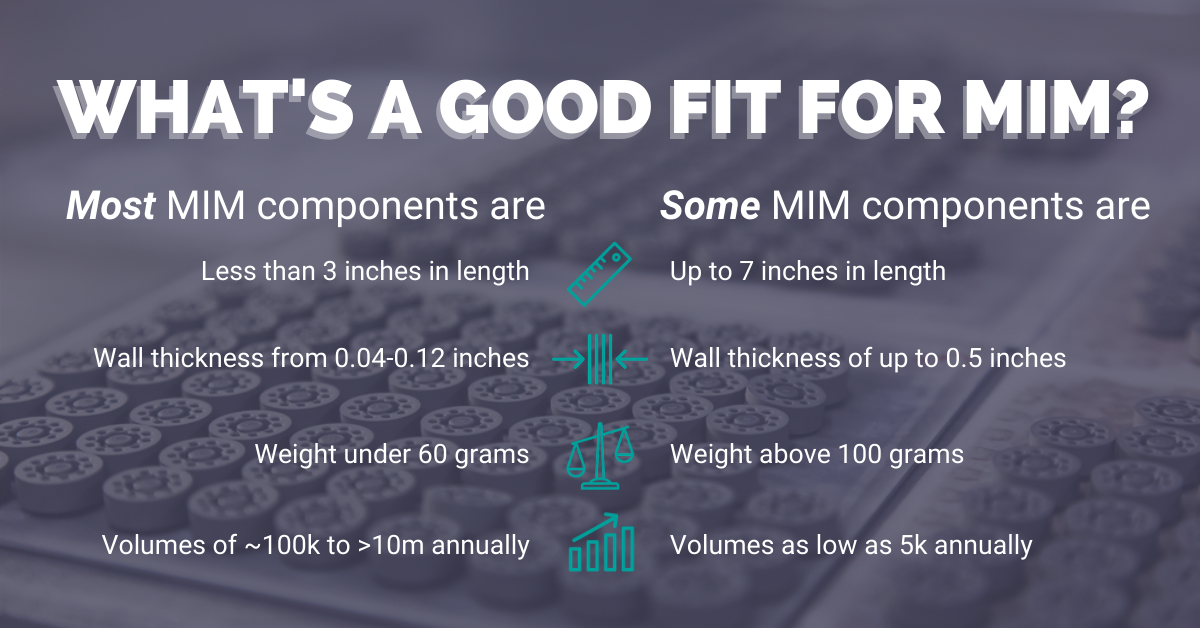blog 

What Makes A Good Fit For MIM

With so many metalworking solutions out there, we often have engineers ask, “What is MIM and when should I use it?” Metal injection molding combines the technologies of thermoplastic injection molding and powder metallurgy to produce complex shaped, high density, high-performance metal parts. But when will MIM deliver the most ROI compared to other processes for your project?
When discussing what makes a part a good fit for MIM, the conversation starts with part size, part weight, and part volume. After all, if the part is too large, it takes up too much space on MIM molds and is not cost-effective. But with MIM, the level of complexity of the part is usually what determines how much ROI manufacturers stand to gain with the MIM process.
Part sizes for MIM
The limiting factors for the MIM process are determined by the size capacity of the mold and how much raw material is required per component. For these reasons, MIM components are usually smaller than the palm of your hand and weigh under 60 grams.
MIM mold real estate
The size of a part is not limited by the MIM process itself, but rather the amount of “real estate” it takes up in the mold. For example, if you think of the mold or tool as a sheet of paper, if you can fit only 2 cavities on the mold versus 6 or 8, especially as the part size increases, it will take far longer to create 100,000 parts which is not nearly as efficient as smaller MIM components.
Read more about how large you can make a MIM component here.
MIM feedstock cost
MIM feedstock is a combination of very fine, customizable metal powders and polymers, which tends to be more expensive than your typical molten casting alloys. Because of this, material cost is one of the biggest limiting factors in the MIM decision making process. At OptiMIM, our engineering team can help to optimize your component’s features to minimize wall thickness for the most ergonomic design.
Mold space and materials limit most MIM components to less than 3 inches in length, but what the MIM process lacks in size capacity, it more than makes up for in part complexity, repeatability, and scalability.
Take advantage of increased complexity for maximum ROI
While MIM tooling has a higher initial ticket price than our competitors who machine wrought stock, machine investment casting, and machine conventional permanent molding, MIM part cost remains constant with additional complexity and molded features.
MIM is capable of achieving intricate features such as dovetails, slots, undercuts, fins, internal and external threads, or complex curved surfaces—just to name a few. MIM can also produce cylindrical parts of unique geometries with greater length to diameter ratios than most other casting technologies, as well as consolidate several components into one for better functionality.
If you’re looking to learn more about what the characteristics that make a component a good candidate for the MIM process, you can download our FREE on-demand webinar on What’s A Good Fit for MIM?
Fill out the form below to sign up.



